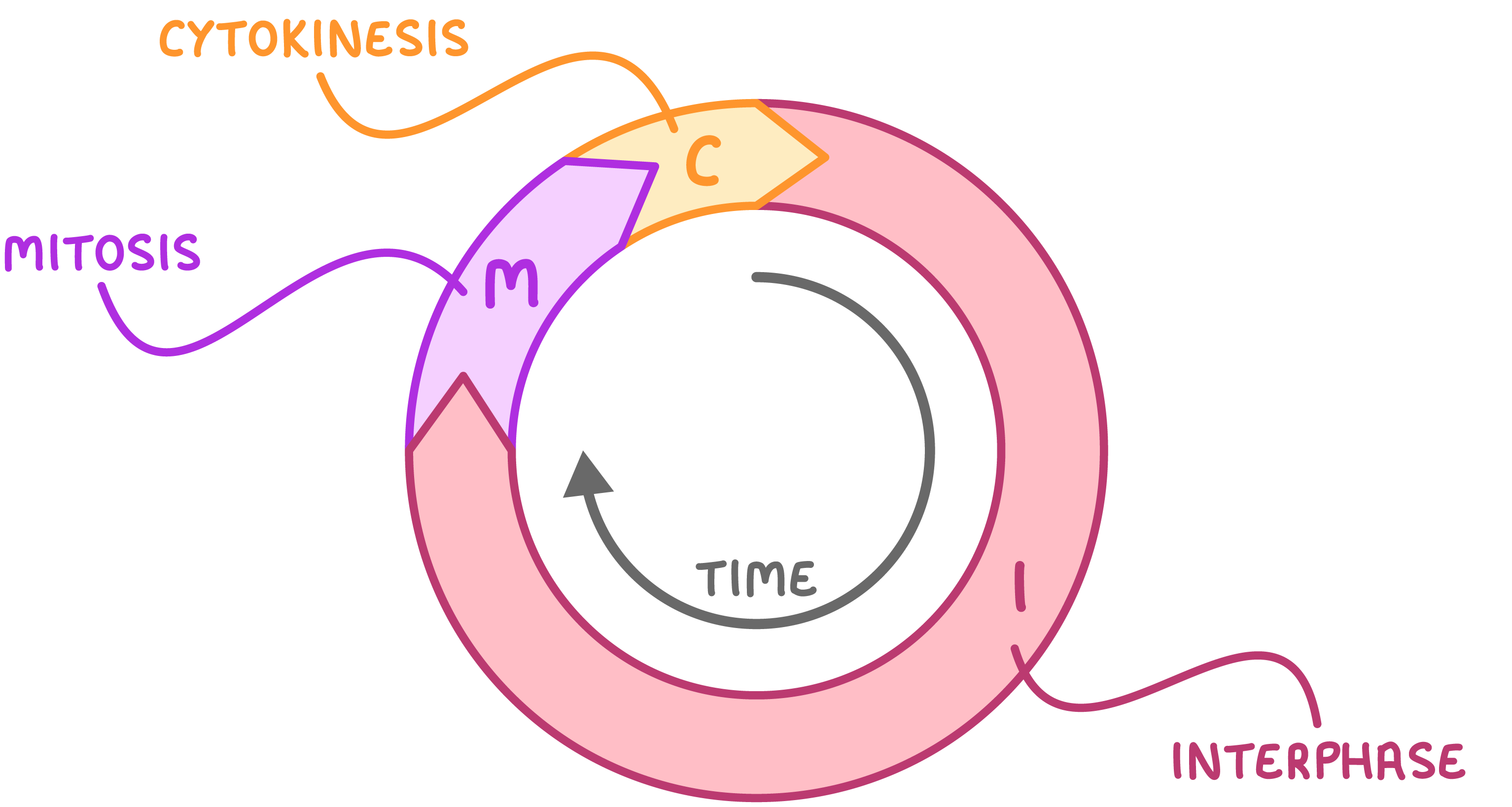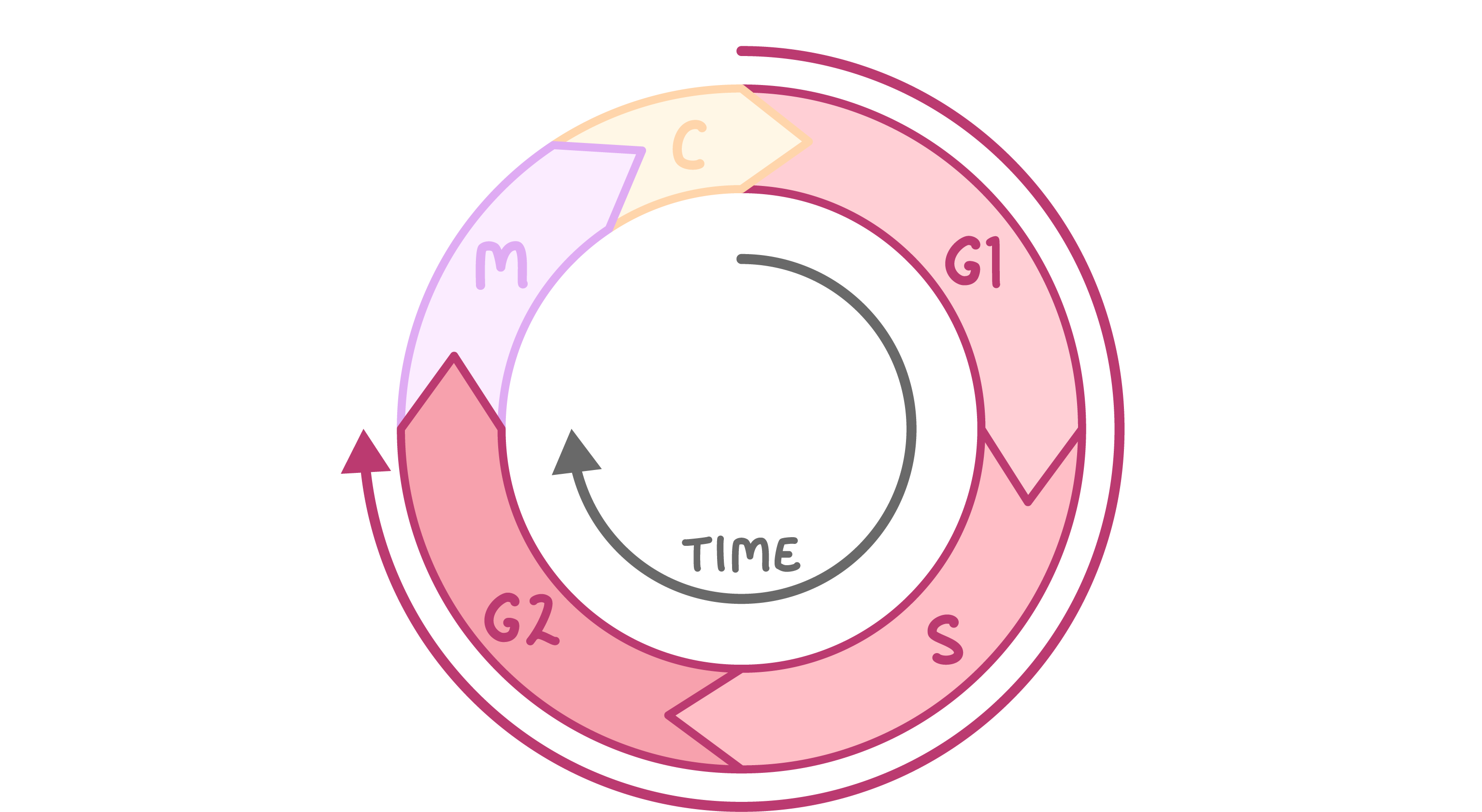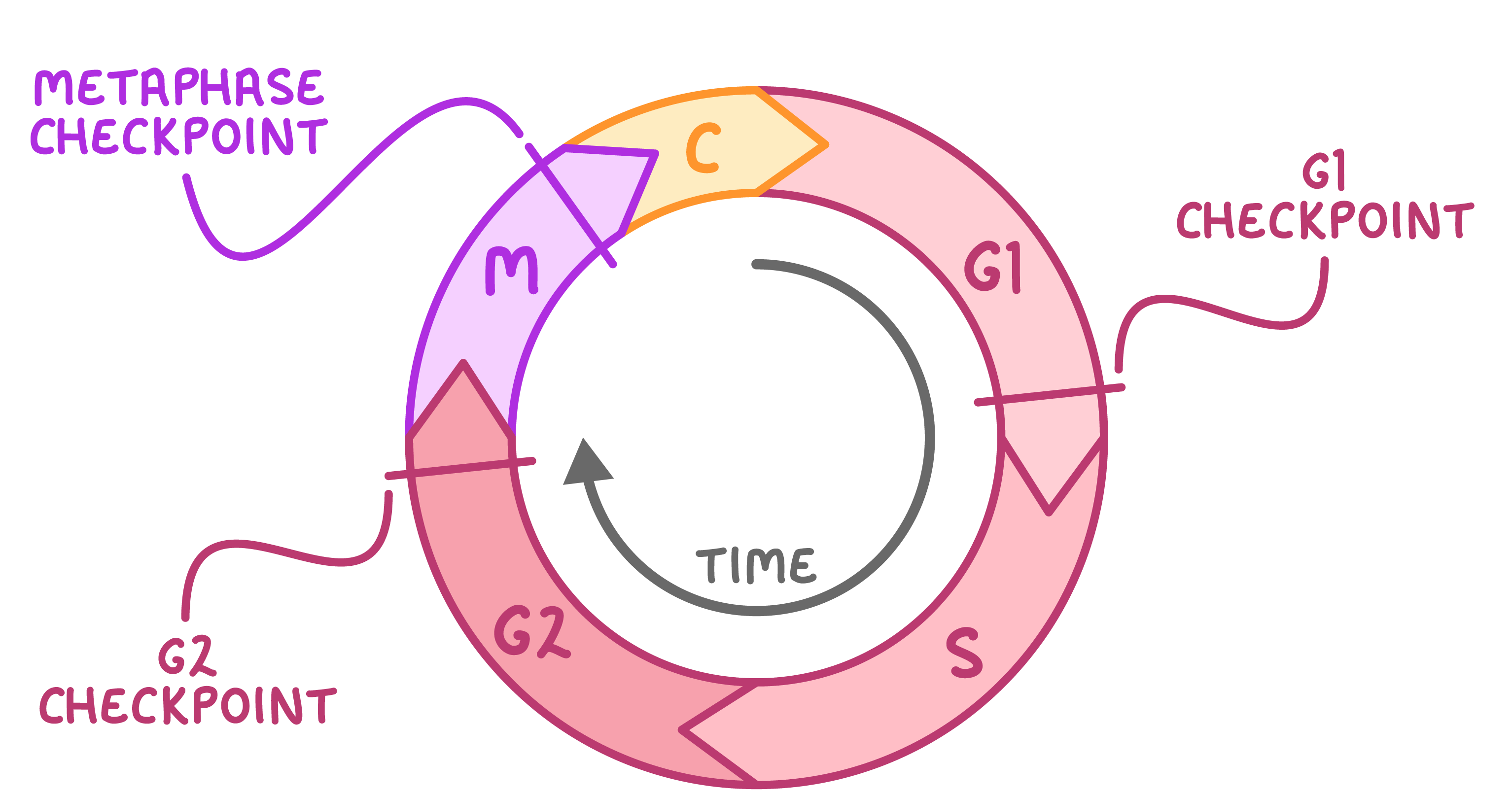Cell Cycle
This lesson covers:
- The phases of the cell cycle
- The processes that take place during interphase
- How checkpoints are used to regulate the cell cycle
Cell cycle Organisms need new cells to grow and repair tissues in the body. Not all cells in the body are capable of dividing, but those that are follow a sequence of steps known as the cell cycle. |
 The cell cycle consists of three main phases:
|
Interphase During interphase, cells carry out their usual functions whilst also preparing for cell division. This involves replicating the DNA and organelles. |
 Interphase consists of three phases:
|
Cell cycle checkpoints During the cell cycle, the cell must pass various checkpoints in order to progress to the next stage. These checkpoints assess whether the processes at each phase of the cycle have been accurately completed.  |
There are three checkpoints you need to be able to describe:
|